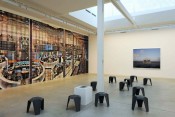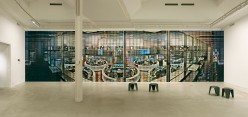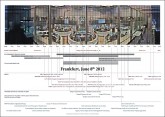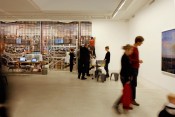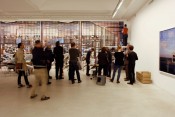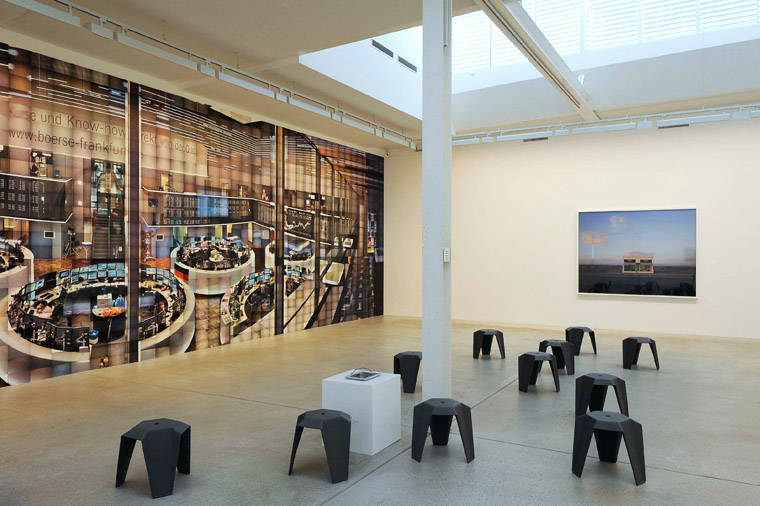 STATUS, 24 dokumente von heute, Fotomuseum Winterthur 2012 (Photo Christian Schwager)
STATUS, 24 dokumente von heute, Fotomuseum Winterthur 2012 (Photo Christian Schwager)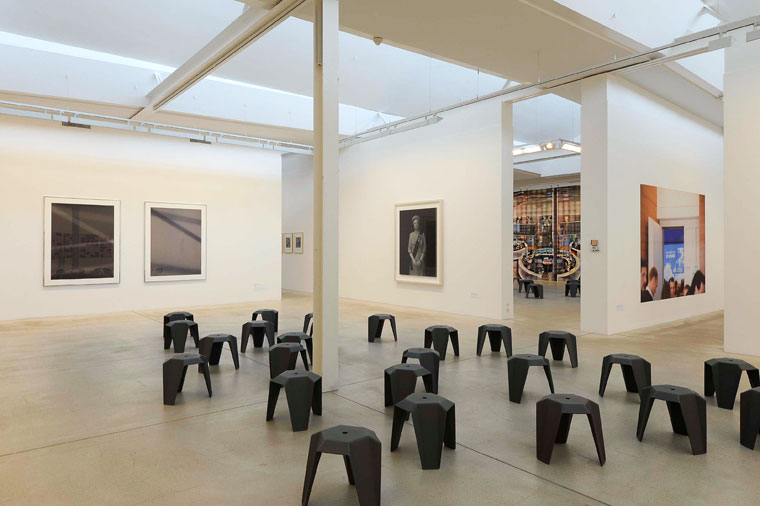 STATUS, 24 contemporary documents, Fotomuseum Winterthur 2012 (Photo Christian Schwager)
STATUS, 24 contemporary documents, Fotomuseum Winterthur 2012 (Photo Christian Schwager)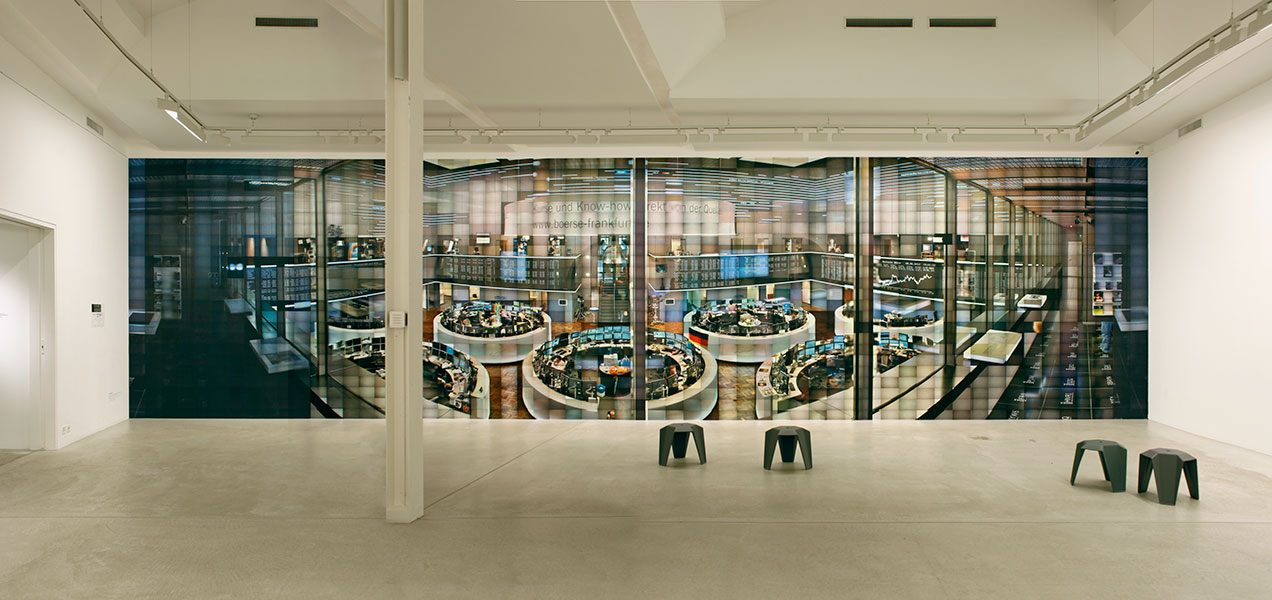 Fotomuseum Winterthur, STATUS – 24 contemporary documents.
Live photo-installation Competing Agendas: 1440 laser prints in chronological order,
including timetable. Recorded with computer controlled network camera at the Deutsche Börse Frankfurt. Live - one image per minute - transmitted, printed and assembled in Winterthur, during the entire day of the opening - Friday, June 8th, from 0:00 to 23:59. Total 1440 images, total dimensions: 1430/372 cm, timetable 30/42 cm.
Fotomuseum Winterthur, STATUS – 24 contemporary documents.
Live photo-installation Competing Agendas: 1440 laser prints in chronological order,
including timetable. Recorded with computer controlled network camera at the Deutsche Börse Frankfurt. Live - one image per minute - transmitted, printed and assembled in Winterthur, during the entire day of the opening - Friday, June 8th, from 0:00 to 23:59. Total 1440 images, total dimensions: 1430/372 cm, timetable 30/42 cm.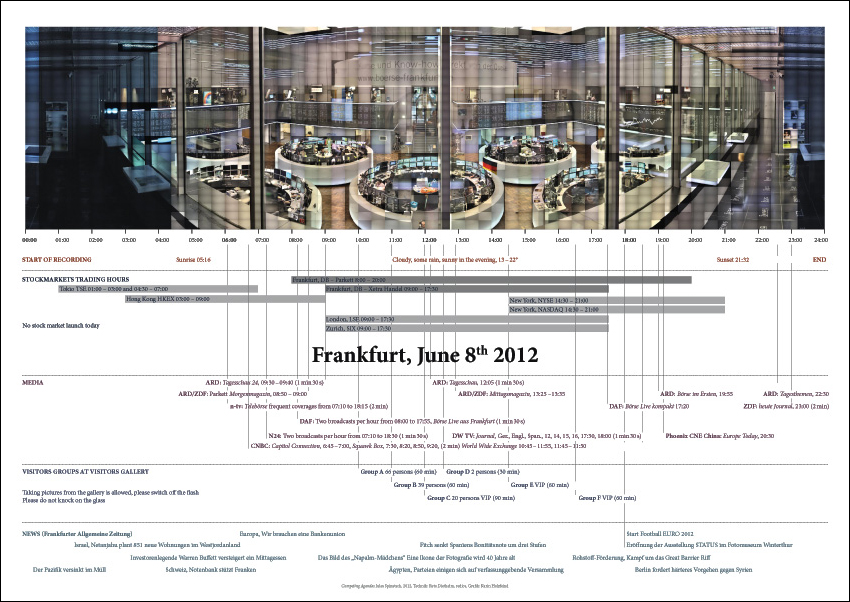 24 hours timetable of Stock Exchange, Media Gallery, Visitors Gallery and panorama image production on June 8th, 2012
24 hours timetable of Stock Exchange, Media Gallery, Visitors Gallery and panorama image production on June 8th, 2012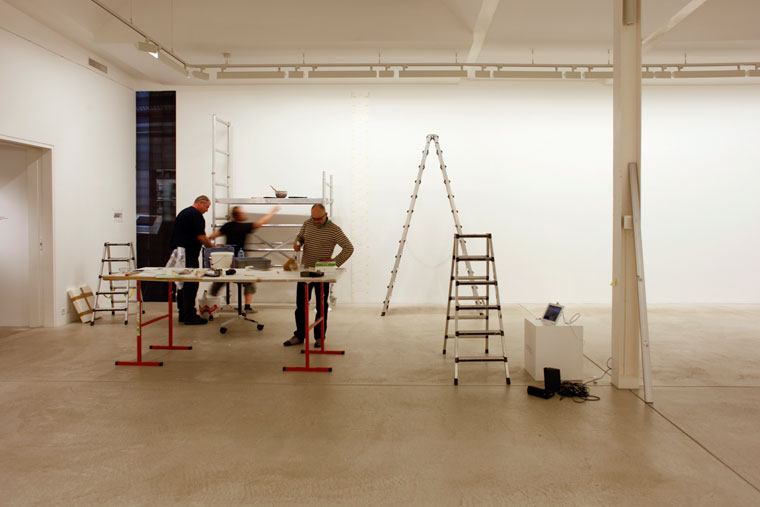 01:00 first columns
01:00 first columns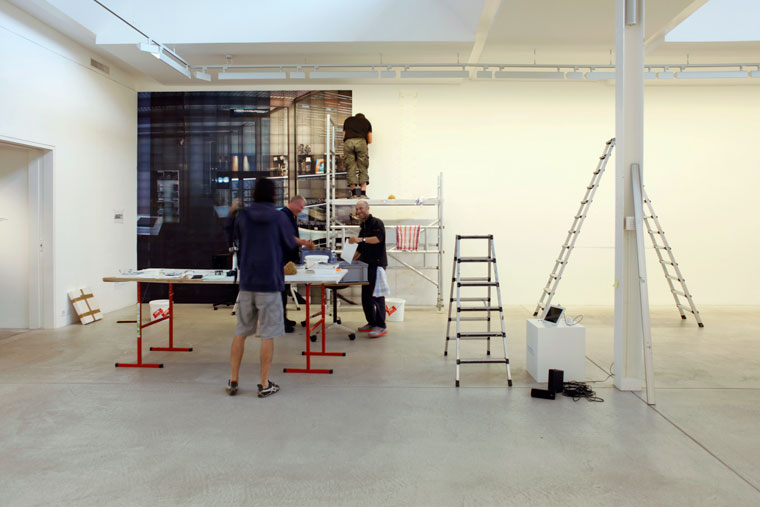 07:40
07:40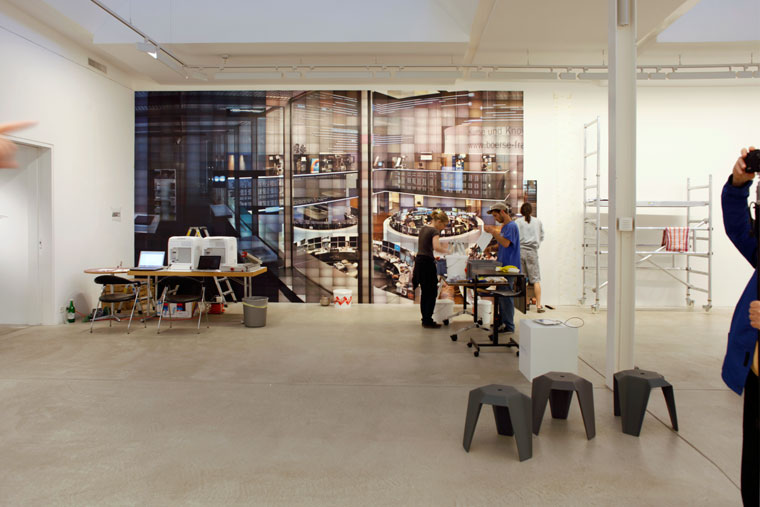 11:00 Press preview, interview and portrait
11:00 Press preview, interview and portrait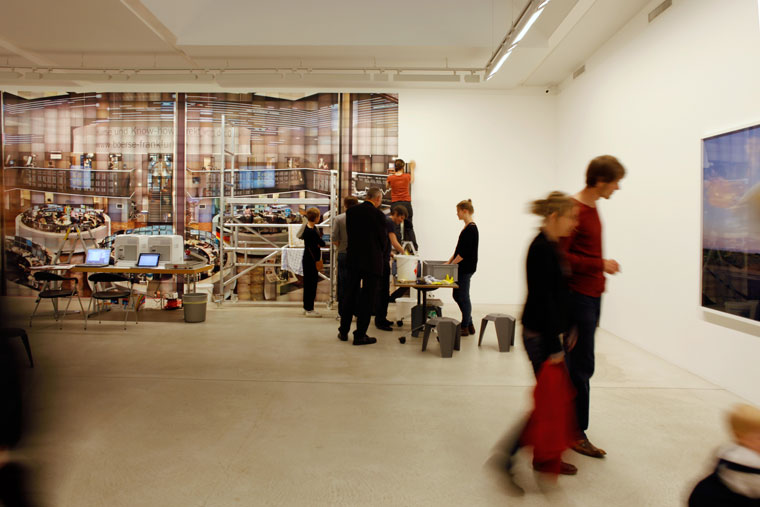 20:30 Opening
20:30 Opening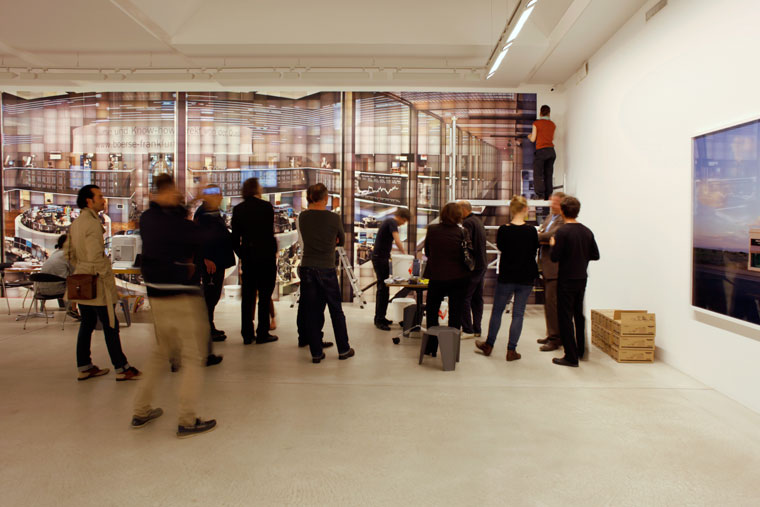 23:58 Last column
23:58 Last column
STATUS – 24 Dokumente von heute
09.06.2012 – 26.08.2012
Wenige Jahre nach dem digital turn, dem Wechsel von der analogen zur digitalen Produktion und Speicherung von Bildern, fragt das Fotomuseum Winterthur in der Ausstellung Status – 24 Dokumente von heute nach dem aktuellen Status, dem Stand und Wert des fotografischen Dokuments und des Dokumentarischen. War der Begriff Status früher durchaus positiv besetzt und markierte eine selbstbewusste Zurschaustellung des eigenen Standes, der eigenen Befindlichkeit, so fragen wir heute zuweilen fast ängstlich nach dem „Stand der Dinge“; wohlwissend, dass dieser oft ungewiss, prekär und zumeist im Fluss ist. Diese treibende Ungewissheit macht sich auch im Feld der Fotografie breit. Die schnelle Verbreitung und Verfügbarkeit von Bildern und Videos in den Printmedien, im Internet, auf sozialen Plattformen wie Facebook, Google, Twitter oder Flickr, haben zu neuen Formen der Kommunikation mit dokumentarischen Bildern geführt. Oft kennen wir die Autoren der Bilder nicht, wissen nichts mehr von den Wegen, die ein Bild hinter sich gelassen hat, bis es zu uns gelangt. Wie können diese fotografischen Dokumente verstanden werden, wie funktioniert das Schema des Sehens, Verstehens, Verwerfens oder Speicherns in unserem heutigen, multimedialen Umfeld? Mit den 24 ausgewählten, exemplarischen „Dokumenten“ dieser Ausstellung wird ein komplexes Netz aus losen und festeren Bezügen geknüpft, das den Status des dokumentarischen Bilds im Hier und Jetzt einfängt. Das dabei vorgeführte Hin- und Herspringen zwischen Themen und medialen Formen, zwischen offiziellen Pressebildern (Wladimir Putin beim Angeln) und anthropologischen Untersuchungen des Familienbildes (die Vox Populi-Arbeit von Fiona Tan) entspricht in etwa unsere heutigen Seherfahrung zwischen High und Low, zwischen Unmittelbarkeit und Tiefgang. Das Erobern fremder Orte oder die stille Annäherung an ein persönliches Thema sind andere Pole der Ausstellung. Während Trevor Paglen mit wissenschaftlicher Akribie verdeckt operierende US-Satelliten am Nachthimmel nachweist, retten Sammy Baloji, Jérôme Leuba sowie Lara Almarcegui abseitige Orte und Biografien vor dem Vergessen. Noch 2009 konnte Almarcegui im Osten von London wild wuchernde Brachflächen fotografieren, die heute überbaut sind, und auf denen im Sommer 2012 die Olympischen Sommerspiele stattfinden.Die Ausstellung Status – 24 Dokumente von heute geht fotografischen Spuren und Geschwindigkeiten analoger wie digitaler Natur nach. Moyra Davey taucht mit ihrer Videokamera in den für sie wichtigen Bildband Portraits in Life and Death von Peter Hujar ein und schreibt damit eine Parabel des entschleunigten Lesens und Schauens. Das heutige Leben mit wechselnden Identitäten und Selbstdarstellungen untersucht Willem Popelier anhand seiner Showroom Girls, die exemplarisch das Verhalten einer jungen Generation in sozialen Netzwerken widerspiegeln. Im 24-Stunden-Panorama des medial bekannten Handelssaals der Deutschen Börse in Frankfurt, erdacht und realisiert von Jules Spinatsch, werden wir Zeuge des zeitgleichen Aufnehmens, Senden, Empfangens und Speicherns in Form einer 14-Meter-Wandinstallation, deren Einzelteile im Laufe des Eröffnungstags am 8. Juni 2012 im Fotomuseum Winterthur zusammenfinden und einen kompletten Kalendertag an der Börse abbilden werden.
Mit Werken von/ with works by Lara Almarcegui, Dmitry Astakhov, Sammy Baloji, Walead Beshty,Ursula Biemann, Fernando Brito, Moyra Davey, Lukas Einsele, Cédric Eisenring/Thomas Julier, Michael Elmgreen/Ingar Dragset, Alfredo Jaar, Jérôme Leuba, Market Photo Workshop, Erica Overmeer, Trevor Paglen, Willem Popelier, Gosha Rubchinskiy, Jules Spinatsch, Hiroshi Sugimoto, Fiona Tan, Jonas Unger, unbekannter Taliban, Lidwien van de Ven, wearethe99percent.
Die Ausstellung wird von Thomas Seelig/Kurator des Fotomuseum Winterthur zusammengestellt
09.06.2012 – 26.08.2012A few years after the digital turn, the shift from analog to digital image production and archiving, Fotomuseum Winterthur explores the current state of the document and the documentary image in the exhibition Status – 24 Contemporary Documents. Whereas the term “status” used to have a thoroughly positive connotation, indicating a confident display of one’s own condition or state, today we ask about the “status” of things almost with a sense of apprehension, knowing full well that situations are often uncertain, precarious, and usually in flux. This uncertainty carries over into the field of photography. The rapid dissemination and availability of images and videos in print media, on the Internet, on social platforms such as Facebook, Google, Twitter, or Flickr have led to new forms of communication through documentary images. Often we do not know who took the picture, nor do we know how the picture has made its way to us. How are these photographic documents to be understood? How do the schemata of seeing, understanding, deleting, and saving function in our contemporary multi-media environment? more >>
The 24 exemplary “documents” selected for this exhibition come together in a complex network of loose associations and immediate relationships, which attempts to capture the current status of the documentary image. The apparent jumps between various themes and media formats, between official press images (Vladimir Putin fishing) and anthropological studies of the family image (the Vox Populi work by Fiona Tan) correspond to our current viewing experience as alternating between high and low, surface and depth. The conquest of unknown territory and the quiet contemplation of a personal theme form two poles of the exhibition. Whereas Trevor Paglen uses meticulous, scientific precision to offer proof of hidden US satellites operating in the night sky, Sammy Baloji, Jérôme Leuba, and Lara Almarcegui rescue removed sites or unusual biographies from oblivion. In 2009 Almarcegui was able to photograph the overgrown lots in East London that have now been built up and will be the sites of the Summer Olympics 2012.
The exhibition Status – 24 Contemporary Documents pursues the traces photography leaves behind, travelling at both analog and digital speeds. Through her video camera, Moyra Davey delves into a volume of photographs that is important to her, Portraits in Life and Death by Peter Hujar, and thereby creates a parable of decelerated reading and looking. Willem Popelier examines the shifting identities and presentations of the self through his work Showroom Girls, which offers an exemplary reflection on a younger generation’s behavior in social networks. Conceived and realized by Jules Spinatsch, the 24-hour panorama of the trading floor of the German stock exchange in Frankfurt—a site highly familiar from media images—enables us to witness the simultaneous recording, receiving, and saving of information in the form of a 14-meter wall installation, whose individual components will come together at Fotomuseum Winterthur over the course of the opening day of the exhibition on June 8, 2012 and depict a complete calendar day.
The exhibition is organized by Thomas Seelig, curator at Fotomuseum Winterthur.
